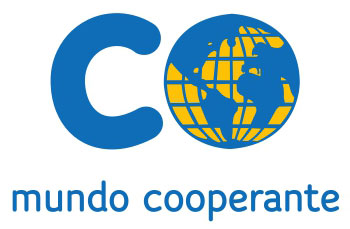Ending Child Marriages
ENDING COMMUNITY ACCEPATANCE OF GIRL CHILD MARRIAGES IN TAMILNADU

Formation of State Advisory Committee
State Level Policy: Strong alliance established with networking of NGOs and making linkages with District Legal Services authority (DLSA), District Child Protection Unit (DCPU), childline 1098, Child Welfare committee (CWC) in district level. Concrete criteria will develop to enroll the NGOs in district level alliance.
Ensuring state government commitments on address child marriage in a comprehensive manner. May be interacting with government on Policy changes and increased assistance for community based organizations(CBO) like Village Level Child Protection Committees (VLCPC) to work with community working groups in the village level with legal support provided by DLSA in all districts in Tamilnadu.
The communities have the power to change the local context that influences the lives of girls. Highlighting the importance of community led approaches and the work of community based organizations including CECM - TN members in 6 districts as initial phase.
He has also made a slew of recommendations to combat child marriages. Promoting free and compulsory secondary education, compulsory registration of marriages, mobilisation of religious leaders and community elders are some of the interventions proposed in all villages in Tamilnadu
Campaign for Ending Girl Child Marriages in Tamil Nadu (CECM-TN):
CECM-TN Launched in January 2017 by HEALDS, an NGO based in Namakkal district to working for the protection of child rights since 1996. The CECM-TN has committed to working together to end child marriages and enable girls to fulfill their potential in all aspects of their lives. Also create environment for girls living with dignity and their basic rights.
Introduction:
About 29 lakh children in the age group of 10-14 years were reported married between 2001 and 2011, according to a report released by the country's apex child rights body today. The report by the National Commission for Protection of Child Rights (NCPCR), based on Census 2011, is a statistical analysis of prevalence of such marriages, their genesis and geographical spread.
It was released by Supreme Court Judge Justice A K Sikri.
It states that despite the decline in child marriage, particularly in the age group of 10-14 years, there are 1.1 million boys and 1.8 million girls who were reported married in this age group between 2001-2011.
"Child marriage violates the dignity of the child and is a major human rights violation. There are incongruities in different laws of the country dealing with child marriage and I urge lawmakers to address these disparities so that the social evil of child marriage is curbed. The NCPCR should tie up with the National Legal Services Authority (NALSA) to conduct seminars in the target states with the help of para legal volunteers," Justice Sikri said
Women and child development ministry secretary Rakesh Srivastava said that the National Family Health Survey (NFHS)-4 reported a decline in child marriage to 26 per cent from 47 per cent in NFHS-3, and hoped that NFHS-5 will find further decline in such marriages.
Analyzing the reason behind child marriages, the NCPCR report states that girls in particular are married off because they are considered as 'paraya dhan' or somebody else's wealth, and is often used by families to ensure that the girls is protected from premarital sex, pregnancy outside of marriage and the need to preserve 'family honour'.
The Honourable Principle District Judge Justice K.H. Elavalagan, Namakkal district of Tamilnadu state said
"The Girl child marriage is a crime under the law, Girl children from poor households are at higher risk of becoming child brides. Where resources are limited, gendered social risks become more acute and opportunities more constrained, forcing parents to make decisions which disadvantage girls,"
Implementation:
• Increased and more public support for ending child marriages, strengthen SRHR, and less negative statements, from key influencers who are defined as: traditional, community and religious leaders, police, government policy-makers (both national and sub-national), celebrities, political leaders
• New evidence on married girl children generated, or existing evidence synthesized or major gaps in child rights/ SRHR knowledge/ attitudes/ behaviour synthesized, which is used for evidence-based advocacy and policy engagement
• The CBOs/NGOs have a crucial role in holding government accountable to their commitments; must be empowered through capacity building training and have increased capacity to lead change in their communities, working with stakeholders in Child Protection Committees in the village level and synthesis evidence based findings.
The role of CECM-TN Advisory committee:
• To support action by state government on Ending child marriage in all districts in Tamilnadu state through advocacy and lobbying.
• To coordinate with governmental organizations on ending child marriage in Tamilnadu through programming and funding all areas of work where child marriage is a barrier to progress.
• Advocate for effective responses and ensure accountability on share lessons learning in their projects, evidence based data analysis and etc.,
• Finding reputed NGOs in all 32 districts, may be divided to five zonal level networks. For Example East, West, North, South and Middle zones. At present in the 1st phase Middle zone has to be taken in to the action.
• The HEALDS NGO take responsibility as state secretariat for “CECM - TN” and Zonal advisory committee (ZAC) Kindly Submitted by M.S.A. Satish Babu. Ph.D., Director Of HEALDS - INDIA Tamilnadu State Convenor of CECM-TN

